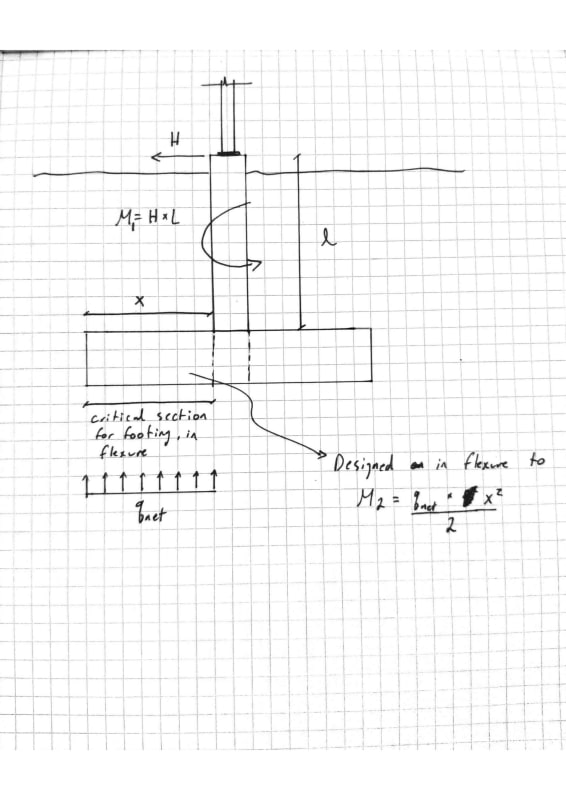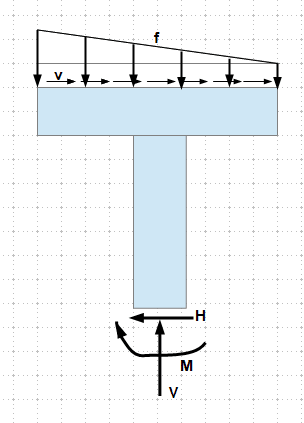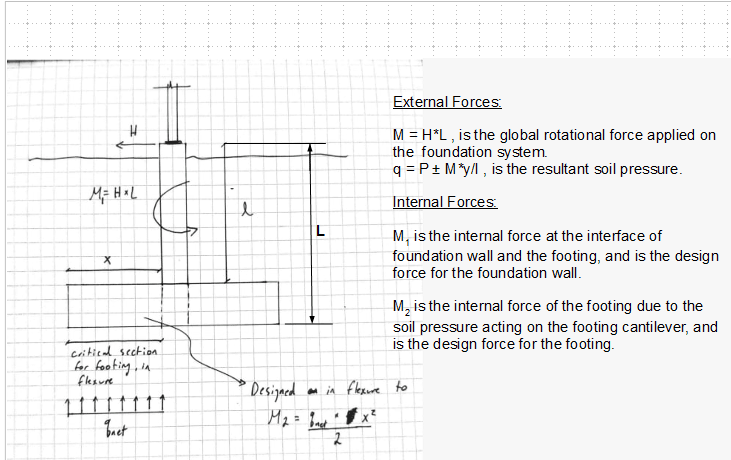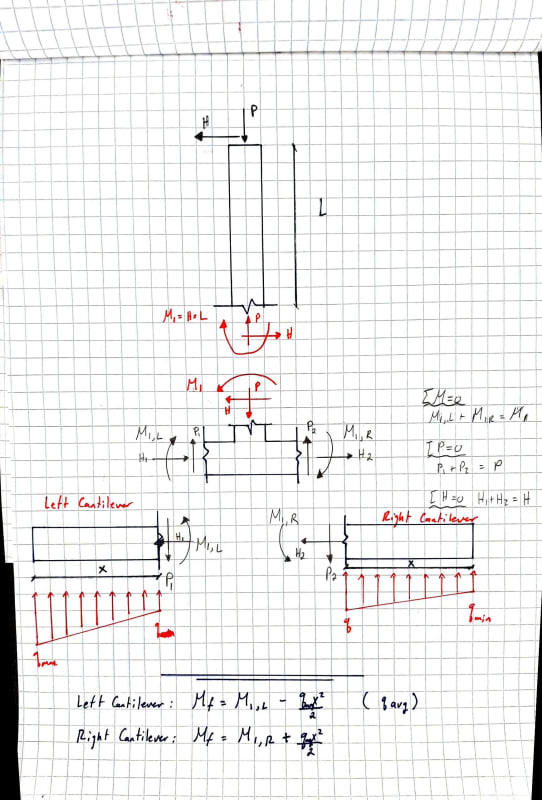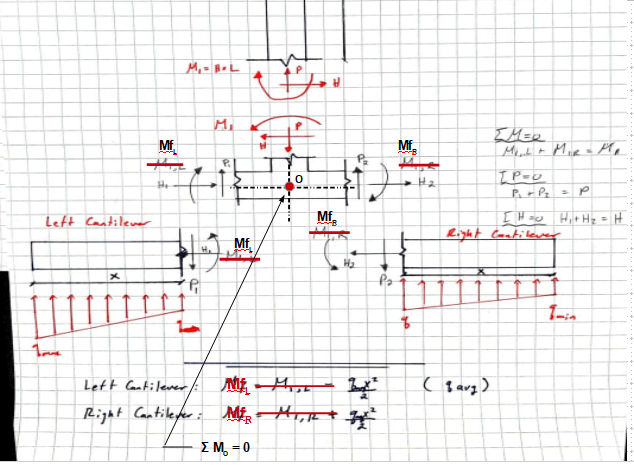CivilSigma
Structural
I have been reading about the design of shallow moment resistant footings using "Foundation and Anchor Design Guide For Metal Building Systems" by: Alexander Newman
The author discusses the design of the foundation to lateral loads.
Horizontal thrust onto the foundation from a column above is only used to design the foundation wall below to moment and shear (M = force * depth of wall).
However, the author does not design the footing for this moment.
Isn't the moment transferred from the foundation wall to footing below? Should it be considered in the design of the footing?
The footing is only designed for moments from net earth pressures. I find it counter intuitive that we don't design the footing from the moment coming from the wall above.
The author discusses the design of the foundation to lateral loads.
Horizontal thrust onto the foundation from a column above is only used to design the foundation wall below to moment and shear (M = force * depth of wall).
However, the author does not design the footing for this moment.
Isn't the moment transferred from the foundation wall to footing below? Should it be considered in the design of the footing?
The footing is only designed for moments from net earth pressures. I find it counter intuitive that we don't design the footing from the moment coming from the wall above.

